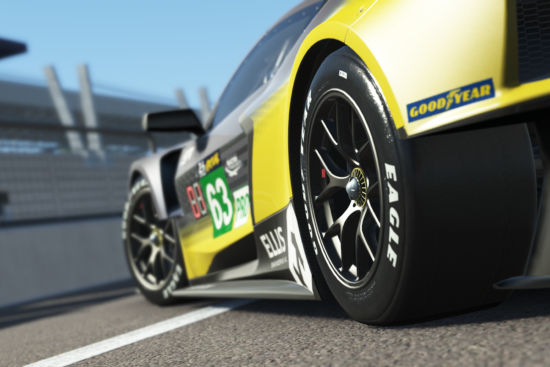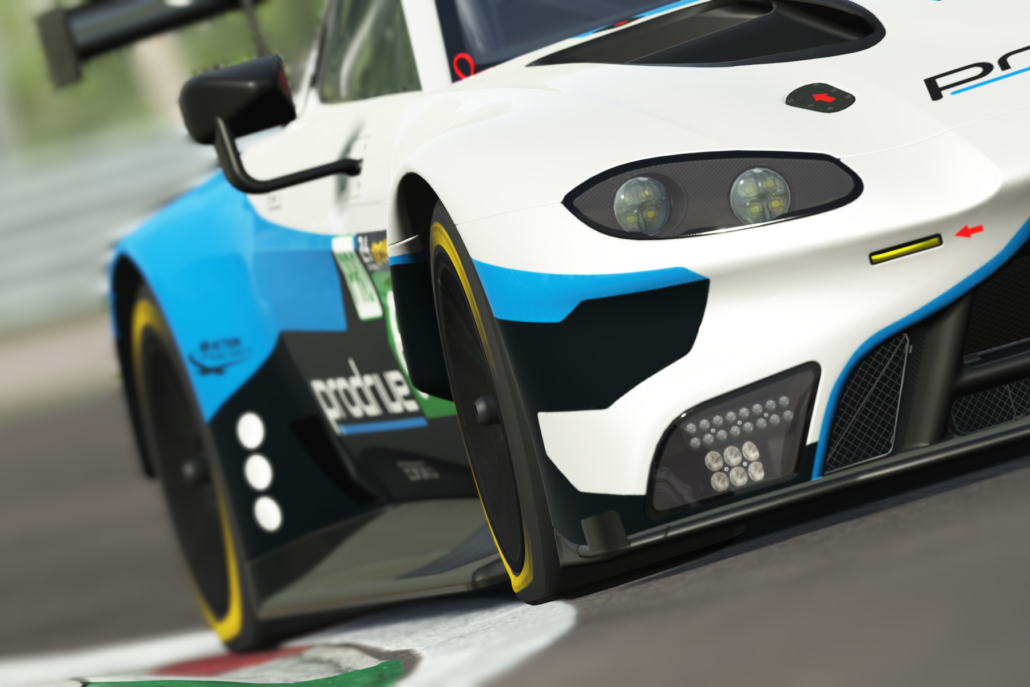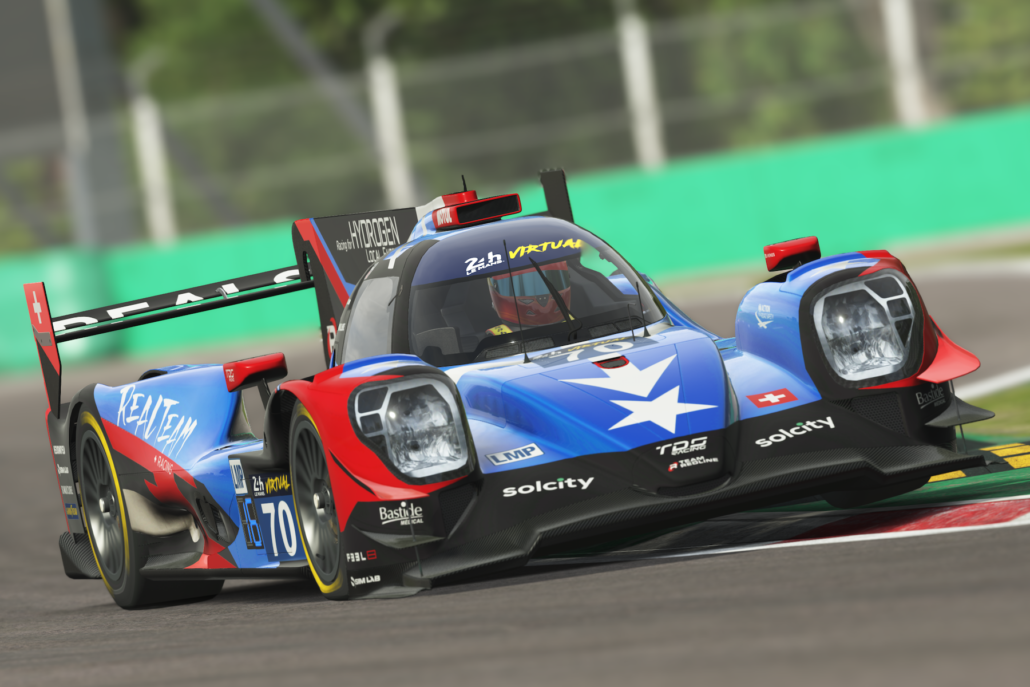Goodyear, rFactor closing gap between real and virtual racing
 Goodyear has helped the developer of the rFactor 2 simulation engine to achieve increased realism in tyres used in the Le Mans Virtual Series (Photo: Goodyear)
Goodyear has helped the developer of the rFactor 2 simulation engine to achieve increased realism in tyres used in the Le Mans Virtual Series (Photo: Goodyear)
Goodyear is contributing to the pursuit of increased realism in virtual racing via its collaboration with Studio 397, developer of the hyper-realistic rFactor 2 simulation engine. The tyre manufacturer says its partnership has led to a major step forward in replicating race tyre model behaviours in the virtual environment. Such developments allow esports drivers to get closer than ever to the experiences of their real-life counterparts. The engine, which uses thousands of data points to create an immersive and authentic experience, is used in the Le Mans Virtual Series, of which Goodyear is an official partner.
Design engineers from Goodyear have performed a key role in building the tyre model for rFactor 2 from the ground up. The manufacturer is a key tyre supplier in endurance racing around the world, making it ideally placed to help bring realistic tyre physics into the virtual world. Goodyear has 14 overall wins in the 24 Hours of Le Mans and is currently the official tyre supplier to the LMP2 category in the FIA World Endurance Championship. In the European Le Mans Series, both the LMP2 and LMGTE categories are supplied exclusively by Goodyear. Significantly, these are the two categories that also compete in the virtual series, making the relationship between esports and track even stronger.
The accumulation of real FIA specification tyre options and tracks that replicate conditions experienced in real life within Le Mans Virtual means esports drivers are faced with identical strategic dilemmas to their real-life counterparts racing in the 24 Hours of Le Mans.
The simulation is so true to the real-world, its developers say on-track driving skill translates into the virtual world, as Studio 397’s DMO, Dom Duhan, explains: “For drivers, we see in recent years that real-life experience helps negotiate in-game challenges like never before. For example, drivers can make much more of a difference in wet and changeable conditions, just like in the real world.”
Goodyear’s involvement in virtual racing opens up new opportunities too. “Tyres are complex by nature to simulate because of how many factors affect their performance,” explains Joao Coelho, Goodyear’s manager testing & track support car Motorsport EMEA. “This is a win-win partnership that brings an added layer of authenticity to rFactor 2. Its tyre model is the most complete anywhere on the market, and Goodyear is at the centre of the virtual racing experience. The potential is huge.”
The competitive advantage
Like in the real world, tyre wear, temperature and pressure are crucial to getting a competitive edge in the Le Mans Virtual Series. As the simulation continues to enhance and develop the core tyre physics, teams are having to become more sophisticated to keep up with the levels of setup tuning required to be competitive. For example, tyre warmup is a critical component to gaining an edge on the competition after a pitstop. With Goodyear’s guidance, aspects such as track temperature and driver input all have a more realistic effect on the car. In the simulation, parameters for each of these are calculated to provide a dynamic virtual world.
How drivers set up and extract performance from the tyres that feature in the simulation is the same as in real life. As well as enhanced tyre modelling, Studio 397 has integrated further core developments such as heat transfer through the brakes. Tyre behaviour, feeling and progression over a race distance are quickly becoming integral parts of the overall virtual racing experience; managing tyre temperatures just after a pitstop could be the difference between getting the better of rivals or losing valuable time.
Achieving greater realism
Studio 397 achieves this level of realism by first taking laser scans of each track. This captures circuit proportions, elevation changes and imperfections. Working with Goodyear, they then develop a tyre that feels, performs and wears like the real thing. This creates races that feel authentic both to those watching and competing.
Duhan describes how collaborating with Goodyear works: “We start by asking ourselves ‘what happens if?’, and once we have answered that question several thousand times and we are happy that the simulator responds to our expectations, we have a realistic model. This is why the partnership with Goodyear has been so important. Access to those closest to the real tyres has informed our development and understanding in ways that otherwise would have been impossible.
“Few people could tell you the impact that a one-degree track temperature increase has on a twenty-five-lap-old Goodyear tyre. It is these elements of the simulator that even to the drivers are imperceivable, but nonetheless add to the overall feeling of authenticity. The number of high-profile racing drivers that give us overwhelmingly positive feedback is a testament to that.”
The result of this complete commitment to perfection is a virtual racing experience that carries the prestige and challenges of one of motorsport’s most famous – and difficult – races. “Le Mans Virtual is an excellent opportunity to be recognised in the esports space, an industry that has seen huge growth and popularity,” concludes Coelho. “We are proud to work alongside Studio 397’s dedicated development team to take Goodyear’s decades-long endurance racing pedigree into new frontiers.”



 Fran; Unsplash
Fran; Unsplash

Comments